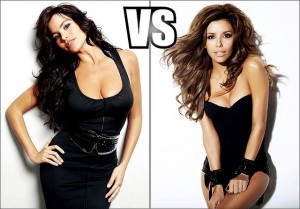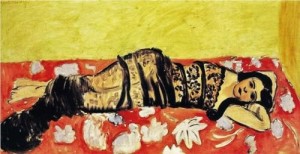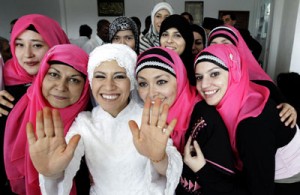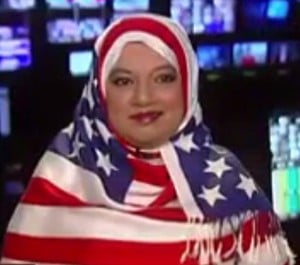What do you think when you hear the word Latin? Or Latina, to be more exact? Spicy? Or perhaps “loud,” “flamboyant” and “sexy”? Maybe the word just inspires images of women like Salma Hayek and J-Lo. Many of us are, sadly, very familiar with the image of what “Latinas” are supposed to look like. Just think of bombshell Gloria from Modern Family, hyper-sexual Gabrielle Solis from Desperate Housewives or Michelle Rodríguez, the sexy tomboy, from Fast and Furious.

As a Latin American woman, these stereotypes have always bothered me, especially because, in some cases, the stereotypes surrounding “Latinas” are often perpetrated by some high-profile Latin Americans themselves who tend to abide by the sexualized stereotypes even outside their TV or movie characters.
Personally, I prefer the term Latin American to “Latina” which I see as a Western creation that conjures up these stereotypes.
Several things bother me about how Latin American women are portrayed in the media. It is not only that most of us look nothing like the women mentioned above, but also that I hate labels. I do not see myself as a bombshell, let alone as a hyper-sexual woman looking to please Western men. I do not see my self in the “Latina” image, which I see as a creation of the patriarchal Western imagination. Instead, I like to think of myself as a plain and simple Latin American woman… no one’s fantasy or stereotype.
This image of the hyper-sexual “available” woman can be parallel to the way Muslim women were represented in Orientalist depictions of the odalisque. Nowadays of course, this has changed. While both Muslim women and Latin American women are seen as coming from communities with close family ties, cultural religiousness, and with an attachment to the traditional gender roles of women as mothers and wives, their images are very different.

Today, a common depiction is that of the niqabi, all covered in black, who represents a mystique that is not present in the Latina imagery. Apparently, Latinas have a lot to show and are happy to do so. They leave nothing to the imagination as opposed to Muslim women that “make” Western men work for it.
MMW has discussed, in several instances, the continuous attempts to portray Muslim women as mysterious figures underneath black robes and sheer face veils. One example that comes to mind is woodturtle’s piece on Sebastian Farmborough’s work depicting niqabis emerging from the water. I cannot help but thinking that if his work showed Latin women, they would be wearing skimpy bikinis and showing a lot of skin. Apparently it is either one or the other… either we show everything or we cover everything up!
Now, keeping that in mind, what happens when Latin women (sexy, voluptuous Latin women) become the new face of Islam?
Although Islam is not new to Latin America or immigrant communities in the West, in the past few months Latin American women have been depicted as the “ambassadors” of Islam.
The articles talking about them do not only describe their conversion to Islam, but also their important role in spreading Islam in their native countries. This task is always arduous as Catholicism is shown as a predating force over minority religions in Latin America. Latin American women’s conversion stories in the media are often dramatic… full of broken pasts, family rejection and religious epiphanies.
And always, beyond the spiritual side of the women’s conversion, there is the hijab… with many articles invariably trying to show that Islam, as expressed by clothing, has provided these women with a self-worth and appreciation that they cannot expect from their communities.

Wendy Diaz, the author of one of the articles, paraphrases Wilfredo Ruiz’s (a convert to Islam and an imam) comments:
“Latina immigrants, […], often feel exploited in Latin America and the United States. The higher status afforded women in Islam and their modest dress, […] offers a sensible alternative.”
Whether hijab actually gives Latin American Muslim women a “better” status is up for discussion as patriarchal practices remain in any culture. And while much of the coverage on Latin American Muslim women only shows those who wear hijab, some Latin Muslim converts find that not wearing hijab eases the connection to their Latin American background and avoids tension with non-Muslim family and friends. Similarly, some women feel that hijab is an Arab import. In the Daily Star, Khadija, a Mexican convert explains:
“I kept my culture; […] I did not adopt any dress from the Middle East.”
Many of the articles describe Muslim Latin American communities as “unique” and different. But becoming the “new face of Islam” doesn’t mean that these Latin women escape the usual pigeon-holes. Instead, a big question mark seems to hover over them.
So what is it going to be? A bombshell in hijab? A spicy niqabi? Or a mysterious Latina?
Being a Latin American convert I find myself lacking options… And I wonder is this what I signed up for? A hijab, a Muslim name, a sexy figure and the responsibility of representing a “unique” Islam?












